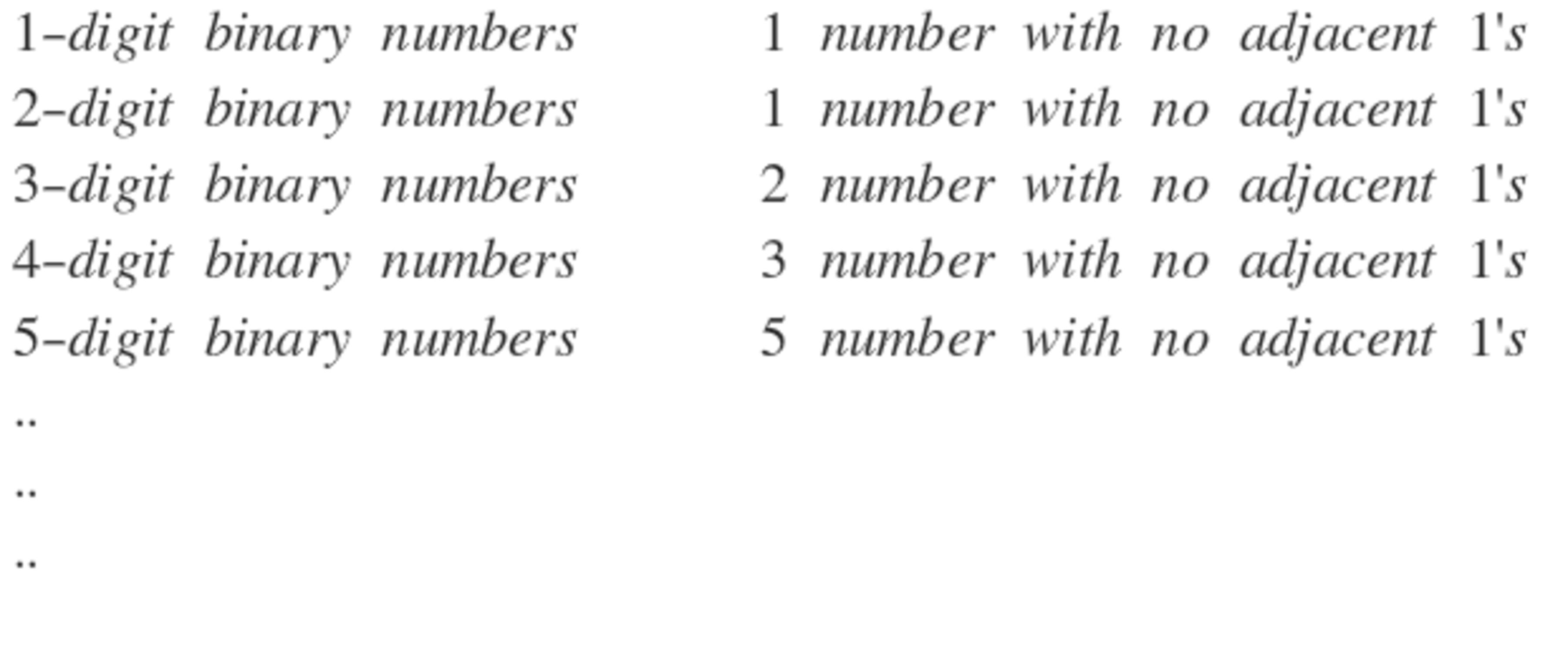Playing with Numbers

I was recently doing a combinatorics problem, where we had to select 4 books from a set of 10 ,where the selected books are not adjacent to each other. The author put forward the idea of using a 10-digit binary number and the books to be selected were 1's and the others were 0's. While playing with the idea I eventually found that(Image above)
and so on, and thus followed the Fibonacci Sequence! Does anyone know why it is? Please share you opinions!
No vote yet
1 vote
Easy Math Editor
This discussion board is a place to discuss our Daily Challenges and the math and science related to those challenges. Explanations are more than just a solution — they should explain the steps and thinking strategies that you used to obtain the solution. Comments should further the discussion of math and science.
When posting on Brilliant:
*italics*or_italics_**bold**or__bold__paragraph 1
paragraph 2
[example link](https://brilliant.org)> This is a quote# I indented these lines # 4 spaces, and now they show # up as a code block. print "hello world"\(...\)or\[...\]to ensure proper formatting.2 \times 32^{34}a_{i-1}\frac{2}{3}\sqrt{2}\sum_{i=1}^3\sin \theta\boxed{123}Comments
Let an be the number of n-digit binary numbers such that no 1's are together.
Now such number might end with 0 or 1
Case-1, It ends with 0 Now the number of such n-digit numbers will be an−1
Case-2, It ends with 1 Here, it cannot end with 11 block. It must be ending with 01 Number of such binary numbers will be an−2
Therefore an=an−1 + an−2 which is the condition for fibonacci series.